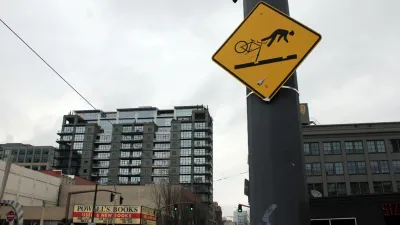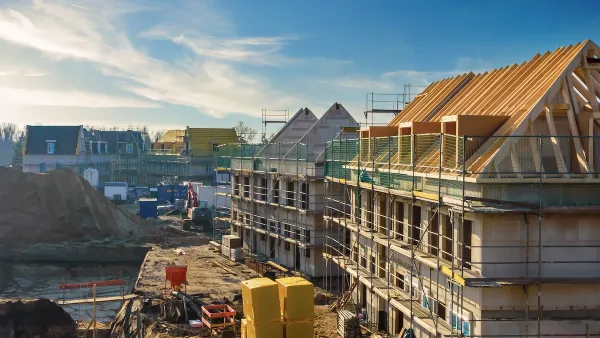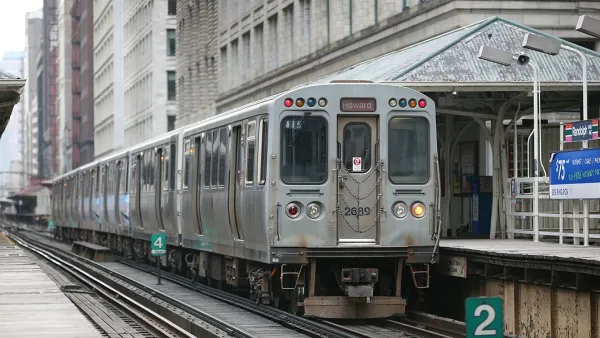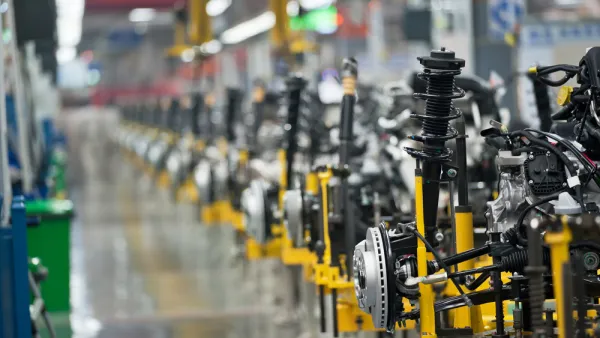Depending on the type of bicycle for sale, the price may jump 25 percent due to new tariffs paid by importers and consumers (not China as the president would have you think) if it arrives in the United States after June 1.

"It will take just a few short weeks before the U.S. bike market sees significant wholesale and retail price increases on bikes, parts and accessories due to the long-delayed 25% tariff on Chinese imports, which finally took effect Friday morning," reports Steve Frothingham, editor of Bicycle Retailer and Industry News, on May 10.
The tariff increase applies to [$200 billion of products (pdf)] that left China after 12:01 a.m. Friday or that arrive in the U.S. after June 1.
The 25% is in addition to existing tariffs on Chinese products, which are generally 5-11% on bikes. The new tariff does not apply to helmets and lights.
Juvenile and entry-level adult bikes sold at "mass merchants," e.g. Walmart, will likely see the steepest price increases, while "higher-priced adult bikes sold in IBDs [independent bicycle dealers] are sourced from Taiwan and other countries besides China," writes Frothingham. However, for bike stores that do sell lower-priced brands that have been manufactured in China, they will be subject to the 25 percent Trump tariff, along with lower-priced parts and accessories, including tires.
The Chinese products might represent about half of the total U.S. bike market through all channels, which is estimated at $6 billion at retail.
Impact on bikes made in the U.S.
As for only bikes sold in the United States, "more than 95 percent are manufactured in China," writes chairman and CEO of Kent International, Inc., based in Parsippany, New Jersey, in an opinion for The Washington Post published May 8.
Though the bulk of my business comes from imported bikes, I also own and operate a factory in Manning, S.C., which produces one of our lines, BCA Bikes. ...Today, our factory is responsible for more than half of the roughly 500,000 bicycles produced in the United States each year. Before President Trump’s trade war, we had plans to grow even further.
American-manufactured bicycles are vulnerable to the new tariffs depending on where their parts are sourced, and that hurts Kent as almost all of their parts for the Manning plant come from China. The Trump tariffs put an end to Kamler's goal of expanding production to 1 million bikes annually.
But Trump’s protectionist measures are getting in our way. We don’t plan to lay anyone off, but until the situation stabilizes and we have some clarity about our future, we’ll just continue buying bike frames from China.
To clarify who pays the tariffs on imported bicycles, Palmer tells CNN's Kate Bolduan (video + transcript) on May 10:
When the goods come into the United States, before we get them, we have to pay the ocean freight, and we have to pay the import duty to U.S. Customs [approximately 11 percent on all bicycles.] Now there's not just the import duty. As of yesterday, we were paying 21 percent, and as of today, we need to pay 36 percent.
BOLDUAN: Is there any way you can avoid passing that on to customers?
KAMLER: Only if I wish to go bankrupt really quickly.
According to Statista, a German online portal for statistics, "Around 99 percent of bicycles sold in the United States are imported from China and Taiwan."
Additional reading on the American bike industry, including the Manning, S.C. plant, and the role of tariffs, see Bloomberg News, August 16, 2017:
Trump’s Tariffs Would Kill These American Jobs: The U.S. bicycle industry needed protection once. Now it might be too late.
-
Tariffs Could Visit the E-Bike Market, July 26, 2018
-
Where Trump's Trade Policies Are Likely to Have the Largest Effect, February 8, 2017
Hat tip to Kate Bolduan.
FULL STORY: New tariffs to slam bike market with price hikes on entry level and juvenile bikes, P&A

National Parks Layoffs Will Cause Communities to Lose Billions
Thousands of essential park workers were laid off this week, just before the busy spring break season.

Retro-silient?: America’s First “Eco-burb,” The Woodlands Turns 50
A master-planned community north of Houston offers lessons on green infrastructure and resilient design, but falls short of its founder’s lofty affordability and walkability goals.

Delivering for America Plan Will Downgrade Mail Service in at Least 49.5 Percent of Zip Codes
Republican and Democrat lawmakers criticize the plan for its disproportionate negative impact on rural communities.

Test News Post 1
This is a summary

Test News Headline 46
Test for the image on the front page.

Balancing Bombs and Butterflies: How the National Guard Protects a Rare Species
The National Guard at Fort Indiantown Gap uses GIS technology and land management strategies to balance military training with conservation efforts, ensuring the survival of the rare eastern regal fritillary butterfly.
Urban Design for Planners 1: Software Tools
This six-course series explores essential urban design concepts using open source software and equips planners with the tools they need to participate fully in the urban design process.
Planning for Universal Design
Learn the tools for implementing Universal Design in planning regulations.
EMC Planning Group, Inc.
Planetizen
Planetizen
Mpact (formerly Rail~Volution)
Great Falls Development Authority, Inc.
HUDs Office of Policy Development and Research
NYU Wagner Graduate School of Public Service





























